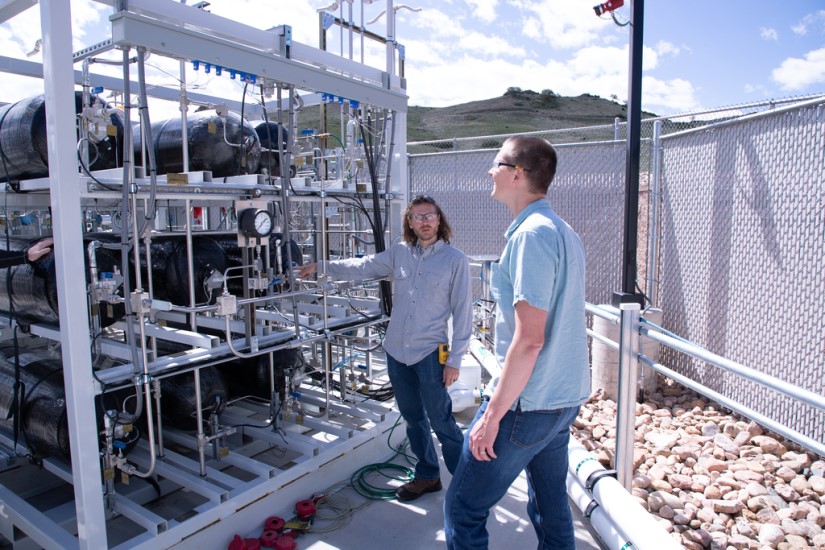The National Renewable Energy Laboratory (NREL) has successfully demonstrated high-flow-rate hydrogen fueling for heavy-duty (HD) vehicle systems. The aim was to compete with conventional, 10-minute fueling times for diesel vehicles. The team demonstrated an average mass flow rate of 14 kg/min (21 kg/min peak) with a 40.3 kg fill into a bank of eight hydrogen storage tanks – similar to those used by HD vehicles – in 2.87 minutes. The researchers used 3-D computational fluid dynamic modeling for the project and are now working on a 60 kg to 80 kg fill in under 10 minutes.
Helmholtz-Zentrum Berlin and University College London (UCL) have visualized the water distribution in a fuel cell, three-dimensionally and in real time. The researchers said part of the water produced from oxygen and hydrogen in fuel cells should remain to keep the membrane moist. However, most of the water must be taken out to avoid affecting efficiency. They tried to optimize the tiny channels milled into metal plates on both sides of the membrane to allow hydrogen, air and water to flow in and out. The researchers, who used neutron radiation to improve the quality of the images, are also collaborating with Institut Laue-Langevin and Université Grenoble Alpes.
DNV said in a newly published report that hydrogen will only account for 0.5% of the global energy mix in 2030 and only 5% by 2050. It said that hydrogen uptake will need to roughly triple to meet 15% of total global energy demand by the middle of the century, in order to meet the targets in the Paris Agreement. “This will require a surplus of renewable energy, to power an electrolyzer capacity of 3,100 GW. This is more than twice the total installed generation capacity of solar and wind today,” said the Norwegian classification society. It sees a vital role for blue hydrogen in the short term, but noted that its competitiveness will fall as renewable energy capacity increases and prices drop.
TotalEnergies has agreed to acquire a 25% stake in Adani New Industries (ANIL), which is the renewables unit of Adani Enterprises. ANIL will become the exclusive platform for Adani and TotalEnergies to produce and market green hydrogen on a large scale in India. ANIL aims to produce 1 million metric tons of green hydrogen per year (Mtpa) by 2030, based on approximately 30 GW of new renewables capacity.
Volvo Construction Equipment has started testing the world’s first fuel cell articulated hauler prototype, the Volvo HX04. It said the prototype can be charged with 12 kg of hydrogen in about 7,5 minutes, for about four hours of operation.
TECO 2030 has teamed up with partners Ektank, Shell Shipping and Maritime, and DNV to launch Hy-Ekotank, its hydrogen-powered tanker concept. The concept is based on a retrofit installation of fuel cells with compressed or liquid hydrogen storage, said the Norwegian company.
Wood Mackenzie said the total potential demand for low-carbon hydrogen in the refining sector could reach up to 50 Mtpa by 2050.
This content is protected by copyright and may not be reused. If you want to cooperate with us and would like to reuse some of our content, please contact: editors@pv-magazine.com.



1 comment
By submitting this form you agree to pv magazine using your data for the purposes of publishing your comment.
Your personal data will only be disclosed or otherwise transmitted to third parties for the purposes of spam filtering or if this is necessary for technical maintenance of the website. Any other transfer to third parties will not take place unless this is justified on the basis of applicable data protection regulations or if pv magazine is legally obliged to do so.
You may revoke this consent at any time with effect for the future, in which case your personal data will be deleted immediately. Otherwise, your data will be deleted if pv magazine has processed your request or the purpose of data storage is fulfilled.
Further information on data privacy can be found in our Data Protection Policy.